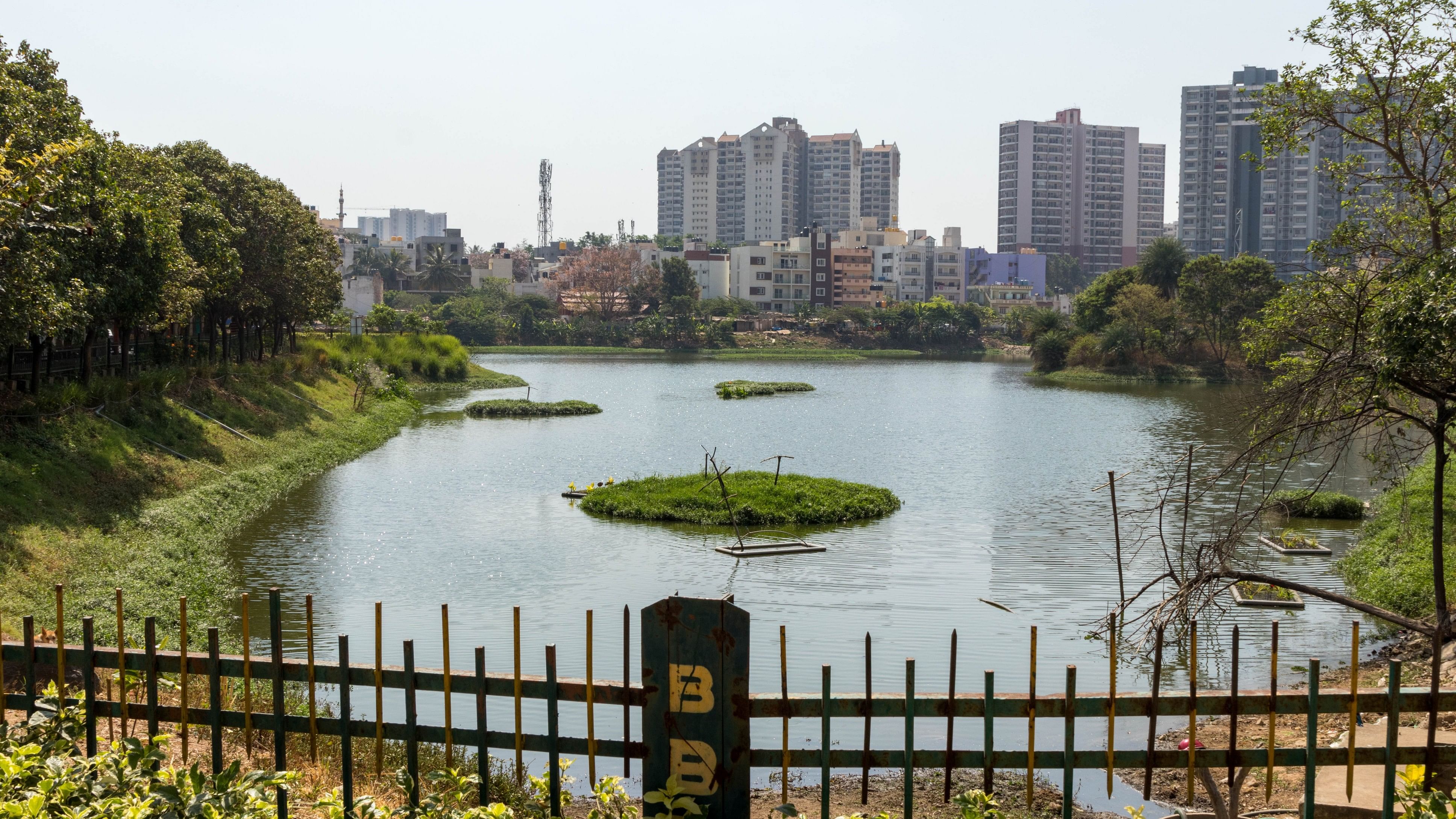
The revival of Puttenahalli lake has given a new charm to the lake which is attracting more and more visitors each day.
DH Photo/Prarthan D R
Bengaluru is in the grip of an unprecedented water crisis. Lakes are drying up and groundwater levels are receding. In Bengaluru’s J P Nagar, however, lies an oasis in the desert: Puttenahalli Puttakere. Though the land in the higher reaches is now visible, it still ripples with water and teems with life.
This was not always the case. “I have seen Puttenahalli lake grow from a garbage dump to a pretty lake,” says K G Ranga Raju, a hydraulic engineering consultant who settled in the locality in 2004.
Rejuvenating Puttenahalli Lake was not an easy task. According to Chandra Shekar N P, the then executive engineer of the Bruhat Bengaluru Mahanagara Palike, “BBMP took over the lakes for development in 2010 from different custodian departments such as the forest department and minor irrigation.” Puttenahalli Puttakere was the first lake taken up for development in south Bengaluru.
“We needed to address various critical issues first. We excavated the dirt and silt accumulated through decades, installed rainwater inlets and also diverted surface runoff from the Brigade Millennium road,” Chandra Shekar explains. Later, the BBMP began feeding the lake with treated water from the South City apartment complex nearby.
"If reviving a lake is one challenge, another is to sustain its development. The Puttenahalli Neighbourhood Lake Improvement Trust (PNLIT) has played a major role in doing so for Puttenahalli lake," says Chandra Shekar. PNLIT’s association with BBMP began with conducting a joint tree plantation drive at the lake in July 2010. The trust took on the responsibility of tending to the saplings and protecting them.
The BBMP appointed the trust as the official citizen caretakers of the lake in 2011. The crux of conservation and management of water bodies is collaborative work among the local community and government.
Like PNLIT, there are many formal and informal volunteer groups in Bengaluru who have dedicated their time to save and nurture their neighbourhood lakes. Many of them depend on the BBMP or corporate funding. However, Puttakere continues to be a “people’s lake” nurtured almost wholly by donations from residents. BBMP provides infrastructural support and projects are executed with CSR funds.
To hold and sustain people’s interest, the trust conducts events such as bird watching, bioblitz (biological surveys), gardening, musical evenings and storytelling once or twice a month. Resource persons such as J N Prasad, naturalist and birdwatcher, are happy to “help the local community actively take charge and immerse themselves in the restoration and conservation of the wetlands.”
“It’s been a profound journey,” says Gitanjali G Govindrajan of Snehadhara Foundation, the cultural events partner in these initiatives since 2013. “From twilight gatherings alive with dance, drumming, and storytelling, to the vibrant community that has blossomed in its wake, this lake embodies the essence of our shared narrative.”
From a single wild date palm on the island in 2010, there are now over 500 trees, countless shrubs and climbers around the periphery of the lake. Almost all of them were planted by residents. The plant species were chosen in consultation with experts.
Though Puttakere is landlocked and only 13 acres and 25 guntas in size, 122 bird species have been sighted here to date.
Promoting conservation
People will see themselves as stakeholders only if they are kept in the loop. Social media, bi-annual newsletters, email updates, in-person conversations and a black notice board help to a large extent. This was how Ranga Raju contacted the trust in 2011.
“I was happy to see that the lake was rejuvenated at last and even more surprised to see that it was being taken care of by an NGO. I telephoned and well, this was the beginning of my relationship with PNLIT,” he says.
Challenges
The biggest threats to water bodies are toxic pollutants and encroachment. In Puttakere, sewage inflow began as a trickle in 2017, worsened and led to a massive fish kill in March 2018. It took three years for the sewerage board to replace the existing underground drain with a bigger pipe and divert raw sewage.
But the struggle was worth it. Puttenahalli Puttakere is once again a thriving water body and rich ecosystem. The trust works closely with the Lakes Division, BBMP and other departments. However, frequent shuffling of officers presents an additional challenge.
Citizen participation in lake conservation has been a boon to Bengaluru. The administration can do a great deal to strengthen this partnership and make it a model for other cities. Water bodies will always require protection and stewardship by the local community working with the government. Puttenahalli Puttakere is testament to the success of this collective endeavour.
(The author is chairperson and co-founder, PNLIT and a Homi Bhabha fellow.)